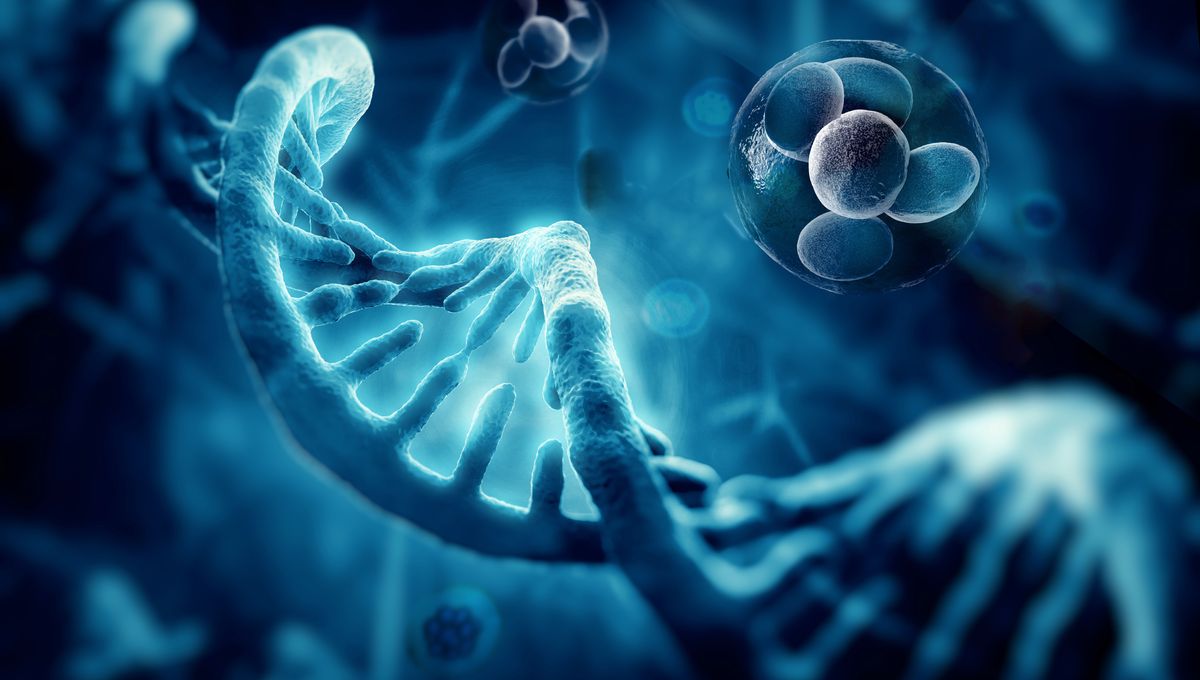
Did you know that your older siblings might have passed on to you more than just a bag of ill-fitting old clothes? If you’re a living human who came out of a womb, you probably have some sort of connection to microchimerism.
What is microchimerism?
Not to be confused with a chimera (a creature from Greek mythology that’s comprised of various different animal parts), microchimerism is a phenomenon in which cells from one individual are present in another. This can happen during pregnancy as cells are passed between parent and fetus through the placenta, in a process called transplacental bi-directional cell trafficking. These microchimeric cells can remain in the marrow and other organs of both parent and child for decades.
Not only can the DNA of the fetus pass through the placenta and into the bloodstream of the person carrying it, but the parent’s DNA can also pass into the fetus, along with a literal family of other people’s DNA that the parent could be holding. Cells from the grandmother and older siblings could potentially pass through the placenta, turning the unborn fetus into an unsuspecting venue for the next family reunion.
During pregnancy, the placenta acts as a go-between for parent and child, dealing with waste and delivering oxygen and nutrients to the fetus. For this reason, it’s expected that there would be a level of cell exchange during this process. While the fetus’s antibodies will usually detect and facilitate the destruction of foreign cells entering the bloodstream, surprisingly, the parent’s body seems to welcome the cells of its unborn offspring.
How common is fetal-maternal microchimerism?
While microchimerism rates from parent to child sit at around 30 percent, cases of fetal-maternal microchimerism are almost double that figure, between 50 and 75 percent. This means that if you’ve ever been pregnant, it’s more likely than not that you’re still carrying that child’s DNA.
The frequency of microchimerism increases still in instances of miscarriage and abortion, making the parent more likely to be carrying the fetus’s DNA if it wasn’t carried to term.
So, what purpose does this familial DNA soup serve?
Implications of microchimerism
It’s not yet entirely clear whether this transfer of cells serves a beneficial or detrimental purpose, or perhaps a bit of both. There is some evidence to suggest that fetal-maternal microchimerism could contribute to autoimmune diseases in the parent. Autoimmune diseases are most prevalent in women, which supports this theory, as do studies into inflammatory tissue that have shown an increased amount of fetal DNA.
However, it’s also speculated that an increase in this foreign DNA in the inflammatory tissue could suggest it is actually working to help repair damaged tissue. Some pre-existing autoimmune disorders can reduce in severity during pregnancy, this could suggest microchimerism has a role to play.
It has been suggested that fetal microchimerism can act as an injection of young, healthy cells, which can in turn help repair tissue throughout the body of the parent. There’s some evidence to suggest these cells contribute to the prevention and survival rate of some forms of cancer, working both to repair damaged tissue, and to act as an early detection system for white blood cells. At the same time, some think the cells could sometimes contribute to tumor growth.
Evidence of microchimerism has been found in organs throughout the body, including in the brain. In mice, the ability of these cells to pass through the blood-brain barrier is put down to the structure of cells that form the umbilical cord. These cells have a similar structure to neurons, making them the perfect fit for repairing damaged brain tissue.
Fetal-maternal microchimerism in the brain may also affect the frequency of developing Alzheimer’s disease. The more fetal-derived cells present in the brain, the lower the rate of Alzheimer’s in patients, some studies suggest.
However, to counter this, higher numbers of fetal-derived cells have been found to correlate with a higher risk of developing Parkinson’s disease.
We might not yet know the true benefits of microchimerism, but it’s quite nice to think you’re probably carrying a bit of your family with you wherever you go.
All “explainer” articles are confirmed by fact checkers to be correct at time of publishing. Text, images, and links may be edited, removed, or added to at a later date to keep information current.
Source Link: Fetal-Maternal Microchimerism: Nature's Bizarre DNA Soup